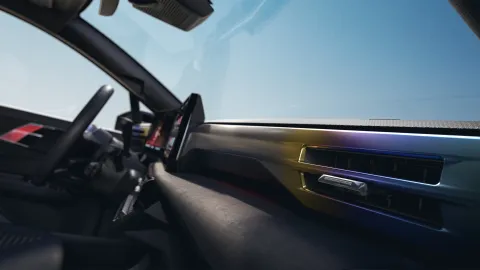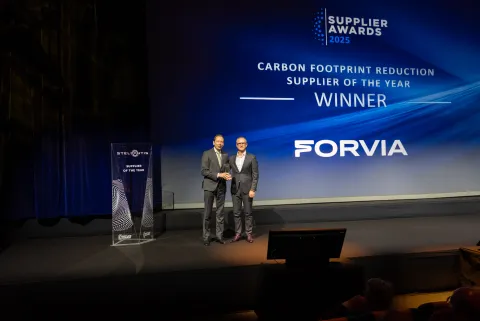
A look back at IAA Mobility 2025

IAA Mobility 2025 has just concluded, and the strong attendance confirms that public interest in the automotive sector remains high. With over 300 vehicles introduced during the event, it offered a rich landscape of innovation and strategic direction—making it an ideal moment to reflect on key highlights.
A European market in transformation
The European automotive market is undergoing a profound transformation. Despite a modest 0.9% decline in new car registrations across the EU, EFTA, and UK in the first half of 2025*, the industry continues to adapt to a complex environment shaped by regulatory shifts, evolving consumer expectations, and intensifying global competition. With 14.9 million units forecast for the year—still below the 18 million recorded in 2019**—manufacturers are focused on long-term structural change.
Electrified vehicles are gaining momentum, though adoption varies across countries. Battery electric vehicles (BEVs) reached a 17.5% market share in H1 2025, up from 13.9% the previous year. Hybrids (HEVs) remain popular, accounting for 35.3% of new registrations, while plug-in hybrids (PHEVs) rose to 8.7%, up from 7.1% in 2024*. Despite this progress, many manufacturers continue to question the feasibility of the EU’s 2035 internal combustion engine ban, advocating for more regulatory flexibility. Meanwhile, energy and mobility organizations remain committed to the current roadmap.
Chinese competition is accelerating, with nearly half of the brands present at IAA originating from China. These players are gaining ground with affordable, tech-forward models, while some legacy brands are losing market share. European OEMs are also increasingly concerned about their reliance on Chinese battery suppliers, such as CATL, which is expanding its footprint across Europe.
Despite these challenges, the shift to electromobility is widely seen as irreversible. The key question now is not if, but how fast and how equitably the transition can be managed.
What’s new on the road
IAA Mobility 2025 confirmed the growing dominance of electrified vehicles and european manufacturers responded to regulatory pressure and rising competition with a wave of strategic launches.
BMW introduced the iX3, the first production model of its Neue Klasse platform, built around a software-defined architecture and intelligent systems. Mercedes-Benz unveiled the electric version of its best-selling GLC, featuring a minimalist design, a full-glass dashboard, and a 30% range improvement over competitors—marking a key milestone in its second-generation EV strategy.
Volkswagen focused on affordability with the ID.Polo, a compact EV priced at €25,000 and produced in Spain. The group also showcased the Cupra Raval and Skoda Epiq, two premium urban EVs designed for younger, tech-savvy drivers.
Renault made headlines with the world premiere of the Clio 6, a bold redesign of its iconic city car. Offered in hybrid, petrol, and LPG versions (excluding diesel and electric), it will be produced in Turkey and launched by the end of the year.
Chinese brands also made a strong impression. BYD revealed the Seal 06 DM-i Touring, a plug-in hybrid estate, and the Dolphin Surf, its first model produced in Europe for the European market—priced between €20,000 and €25,900, directly targeting the Clio segment. Leapmotor, backed by Stellantis, presented hybrid models with range extenders, reinforcing its European ambitions.
FORVIA: A technology enabler
Although FORVIA did not host an official booth at IAA Mobility 2025, its technologies were prominently featured across multiple vehicles—underscoring the Group’s critical role in shaping the future of mobility through electrification, smart systems, and enhanced user experience.
One model showcased the integration of three breakthrough innovations:
- The Front Phygital Shield, a large-area module blending physical and digital elements with multicolor lighting, radar-permeable surfaces, heating, and embedded sensors—supporting automated driving.
- The Intelligent Power Distribution Module (iPDM) with embedded eFuse technology, which actively manages energy flow and enhances reliability in increasingly complex powertrains.
- Child Presence Detection, powered by FORVIA’s Smart Car Access, which uses magnetic field disturbances and AI algorithms to detect living beings inside the vehicle—enhancing onboard safety.
Another vehicle featured a cross-domain innovation with smart lighting integration in door and interior panels, combining ambient design, safety, and user customization. This exemplifies FORVIA’s ability to deliver holistic solutions across electronics, lighting, and interior systems.
FORVIA also contributed its interior expertise to other models, supplying key components such as instrument panels and center consoles. In a compact EV designed and produced in Europe for the local market, FORVIA provided complete seating systems and torque and angle sensors—demonstrating its global relevance and adaptability across diverse automotive segments.



